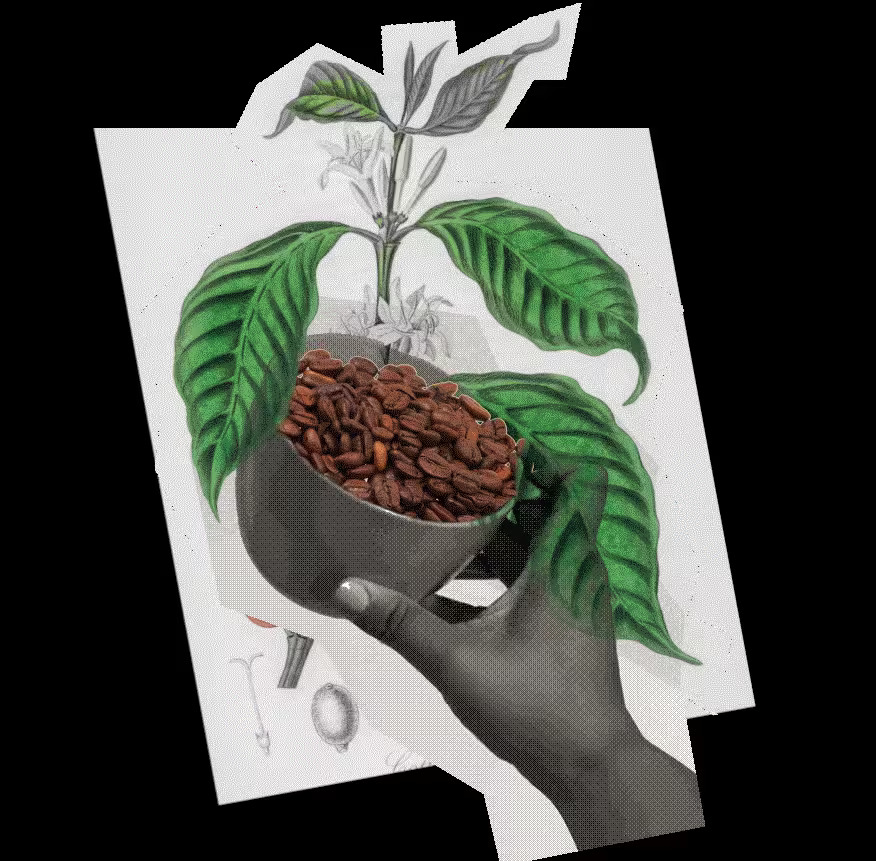Grounds for Concern: Climate Change's Impact on Coffee Farming Communities
A research article by Maya Britstein
May 24, 2024
Key Takeaways
- Climate change significantly threatens the global coffee industry and the livelihoods of over 120 million coffee producers.
- The warming temperatures and altering rainfall patterns impact coffee plant growth, yield, and quality.
- The spread of pests and diseases exacerbates the challenges faced by coffee farmers.
- Only about 5% of coffee farms worldwide have the resources to effectively address climate change impacts.
- Urgent action is needed to support coffee farmers, provide them with resources and knowledge, and mitigate the effects of climate change.
“Over the past years, the weather has really become more and more difficult. Not even the weather forecast works anymore," said William Bunjjo, a coffee farmer from Kyabakadde, Uganda (source). “Previously, rain was predictable, but now you can’t know when the rain comes. It is dry when it is supposed to rain, and then a lot of rain comes at once… Because of my training, I can do many things, but when the drought comes, I can’t do much.”
Coffee, the beloved beverage enjoyed by millions worldwide, is currently facing a threat. Climate change is also threatening the livelihoods of over 120 million coffee producers (source). The coffee cultivation industry is being shaken by unpredictable weather patterns and the spread of pests and diseases. The coffee plant, being sensitive to its environment, is deeply affected by changes in climate (source)
According to projections, there could be a staggering 50% decline in global land suitability for cultivating both Arabica and Robusta coffee species (source).
The countries most affected by reductions in suitability for coffee cultivation include Ethiopia, Sudan, and Kenya, with a potential decline of up to 90% by 2080. Puerto Rico is also expected to experience an 84% reduction by 2070, while Mexico could face a staggering 98% decline by the 2050s (source).
It is estimated that a 1°C increase above the mean minimum temperature of 16.2 °C during the growing season reduces robusta production by 14% (source).
Along with the rising average temperatures, changes in rainfall are among the many factors that affect coffee growers. Farmers have reported observing less consistent rainfall patterns, with fewer but more intense rainstorms. Moreover, the timing of rainfall has become less predictable. These alterations in rainfall patterns pose new agronomic management hurdles for coffee farmers, particularly in terms of pest and disease management, fertilizer application, and timing of harvests (source).
Since the majority of smallholder coffee producers, which produce 70% of the world’s coffee (source), depend on rainfall rather than irrigation systems to water their farms, fertilizers must be applied when it rains so that plants can absorb nutrients effectively. However, reductions in rainfall, along with unpredictable and more intense rainfall patterns, pose challenges for planning fertilizer applications to optimize coffee quality and yield (source).
Additionally, the rain significantly affects the timing of the coffee harvest by determining when the coffee plants flower and fruits develop and how frequently each plant needs to be harvested, which is done by hand. These changes render historical farm management calendars obsolete for coffee farmers in managing their operations (source). “Changes in the rain patterns are super damaging,” says Klara Boza, a third-generation coffee farmer from San Salvador, El Salvador. Klara said that coffee harvest used to be as predictive as child birth. “Based on that initial flowering, you would know the amount of days and weeks that you will be able to harvest the cherries. But these days that's become so unpredictable because of the rain and micro storms happening in the dry season that is just giving false information to the coffee plants of when that winter is coming.” The disruptions in the fruiting cycle cause an increase in cost for the farmers, “you need to pull people from their day-to-day activities on the farm and into coffee harvesting. Harvesters need to pick and choose coffee cherries in between the same coffee plant.” Said Klara (source).
Other regions of the world are experiencing a decrease in rainfall and a rise in the frequency of droughts. In Ethiopia, for example, there has been a notable decrease in spring and summer rainfall, ranging from 15%-20% since the 1970s. For instance, rainfall in Gore, located in southwestern Ethiopia, has plummeted by over 40 inches since the 1950s. According to a recent study published in Nature Plants, Ethiopia could potentially lose between 39%-59% of its current coffee cultivation areas due to climate change by the end of the century (source).
The changes in rain patterns during the coffee growing season and the warming temperatures have also led to an increase in pests and diseases, posing significant threats to coffee crops worldwide. Pests and diseases are not only becoming more frequent but also more severe in their impact. Notably, traditionally low-altitude pests like coffee leaf rust and coffee berry borer are now being detected at higher elevations, indicating their adaptation to changing climate conditions (source). For example, during 2012-2013, the dreaded la roya, or stem rust, cut coffee production in Central America by about 15%, causing a 33% increase in coffee prices in the US (source).
Coffee farmers have a limited capacity to address these issues effectively. Shockingly, only a mere 5% of the estimated 12.5 million coffee farms worldwide possess the resources and knowledge required to renovate or rehabilitate their coffee trees adequately (source). This lack of capability further exacerbates coffee crops' vulnerability to the impacts of climate change and pest infestations, underscoring the urgent need for targeted support and intervention in the coffee farming sector.
The impacts of climate change on coffee farmers and cultivation are becoming increasingly evident and concerning. Unpredictable weather patterns, changes in rainfall, and the spread of pests and diseases are posing significant challenges to the livelihoods of over 120 million coffee producers worldwide. Urgent action is needed to support coffee farmers, provide them with resources and knowledge to adapt to these challenges, and mitigate the effects of climate change. Collaboration between farmers, organizations, and governments is crucial to finding sustainable solutions and securing the future of the popular beverage. By acknowledging the impacts of climate change on coffee cultivation, we can work together to protect the livelihoods of coffee farmers and ensure the availability of quality coffee for generations to come.






